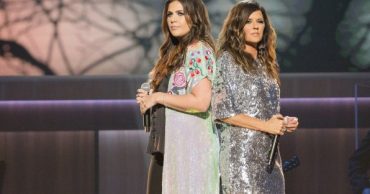“Games of Thrones” came and went with the last season having been waited for with so much anticipation. Television series have their effect on the viewers, and while most are fiction, true stories are always looked up to for their inspiration. Some people have a reputation for being the best narrators while others have made it their mission to go around the globe, filming the most dangerous moments in the jungle. One documentary that is bound to captivate viewers is Animal Babies: First Year on Earth and here are a few reasons why you should watch it.
The variety
National Geographic has always been a favorite channel for those who love to stay in touch with Mother Nature. From how we get to see the different types of animals giving birth and caring for their young ones, to how the jungle is about survival for the fittest. You can almost feel the adrenaline rush through your body as you watch a lion waiting in the tall grass for its chance to pounce on a carefree deer. Similarly, Animal Babies: First Year on Earth does not limit the excitement of pts viewers. According to The Guardian, the documentary will follow six baby animals, not just from Africa, particularly Uganda and Kenya, but also those in the Arctic Circle. In Uganda, we experience a baby gorilla, in Kenya, there is Safina an elephant calf while in Iceland, there is the arctic fox cub. The rest of the babies include an otter, toque macaque, and hyena cubs.
The lessons we learn
Life, whether it belongs to an animal or a human being, has its fair share of challenges. Every living thing has to fend for itself, ensuring that it has a place to live and food to eat. Adults have enough experience to know how to navigate through the sharp corners along this road called life, but children have to look up to the adults to keep them safe. We usually assume that animals are their own worst enemies, with the food chain depicting that one animal is the next meal of another. However, in this series, we learn that it is only the animals that threaten the lives of other animals; human beings have proven to be a threat too. According to Bustle, babies being vulnerable as prey to others is not the biggest risk they face. Instead, human beings who are competing with the animals for land, water, and food make it impossible for the two to live harmoniously. Besides, poachers, especially in Africa, are a menace and the chances of survival for the babies filmed is 50:50.
The narrator
A series may be the best there ever was, but as much as the producers have done their part, the directors can have a retrogressive effect through some of the decisions they make. For instance, currently, Grace Saif’s role as Ani Achola on “13 Reasons Why” is not being looked upon with kindness from the show’s fans. While she is also an actor, her role as a narrator has been met with so much criticism that the 23-year-old had to deactivate her social media platforms. Animal Babies: First Year on Earth must have known that a narrator, especially in such a series, needs to have all the right qualities. Just like the mammal babies who do not give up on their fight for survival, Wunmi Mosaku fights for what she believes in no matter how long it takes. When she attained for Luther in its first season, Wunmi did not make the cut. However, she fought on and ended you being cast on the series, fifth season. Wunmi has won several awards for spectacular performances on screen, and on this series, Reality TitBit says she does such a good job that she could be the next female version of David Attenborough. David has made a name for himself as an innovative educator through his documentaries.
The team of expert scientists
You might think that the scientists involved in the making of the film are just a wild pick by the producers. However, you could not be more wrong; these experts are passionate about the animals filmed and already have made it their life’s mission to know what is happening in the lives of the animals. For instance, Doctor Ester Unnsteinsdottir has for more than two decades been researching the arctic foxes based at the Hornstrandir Nature Reserve. Dr. Ester visits the foxes annually; every June going up to the peninsula with volunteers to check on the procreation progress. Dr. Wolfgang has been in Sri Lanka for more over five decades, which has facilitated in the longest ongoing primary study about primates. His study has uncovered the complex social interactions of the macaques seeing that the city has more than 1000 of the monkeys. Dr. Michelle, on the other hand, sheds her expertise in the world of otters, having interacted with them for at least 30 years. Dr. Martha and Professor Kay have been studying gorillas and hyenas respectively as detailed on BBC.
The soundtracks
Like TV Insider says, without good music, a television series will not have the intended effect of a particular scene. That is why horror scenes have different soundtracks compared to comedy shows so that you can almost feel that something bad is about to happen from the ominous soundtrack. In Animal Babies: First Year on Earth, one crucial person has to be the composer who gives us the authentic feel of the animals and locations filmed. Therefore as Jean explains, he used two types of music to make the series more captivating. One music is recurring to bring cohesion into the series despite the many scenes. The other enhances the particulars of an individual animal and the location to help the viewer appreciate each animal and location without any distractions nor diluting the richness of the scenes.
 Follow Us
Follow Us





